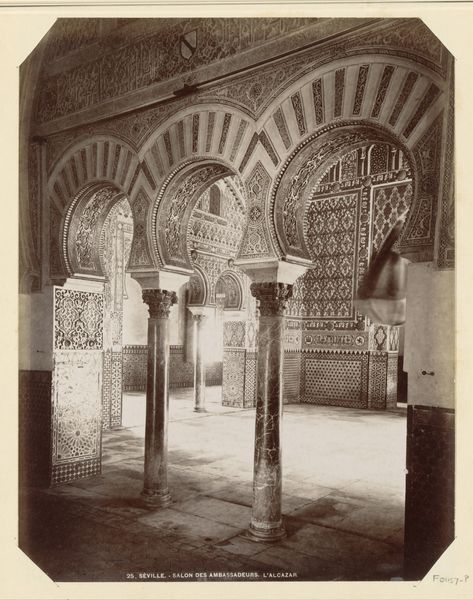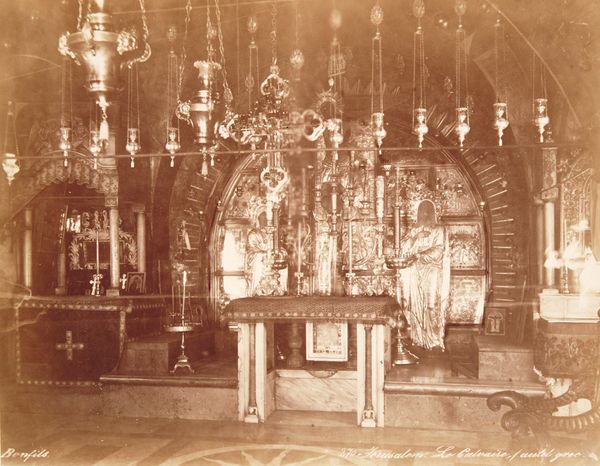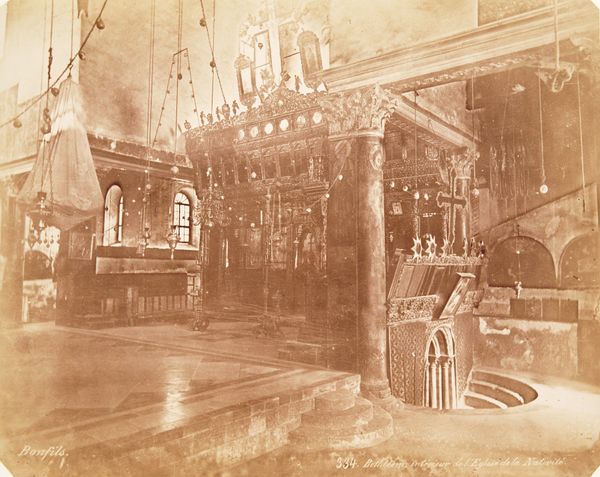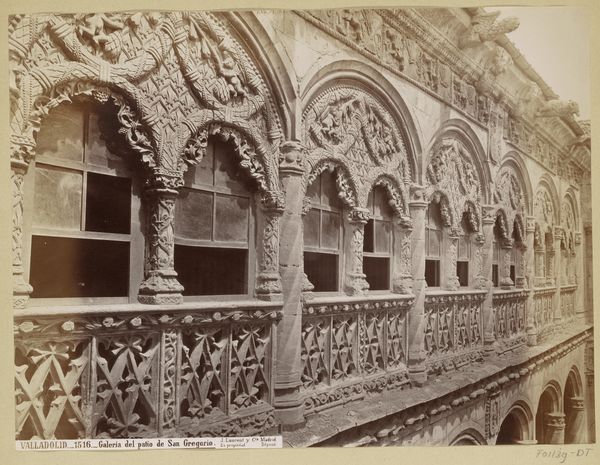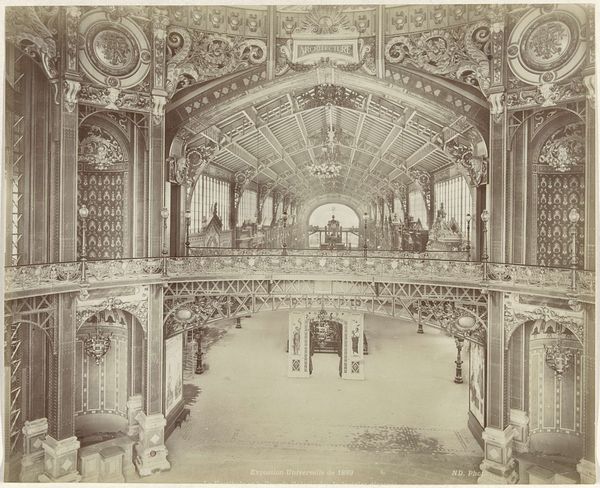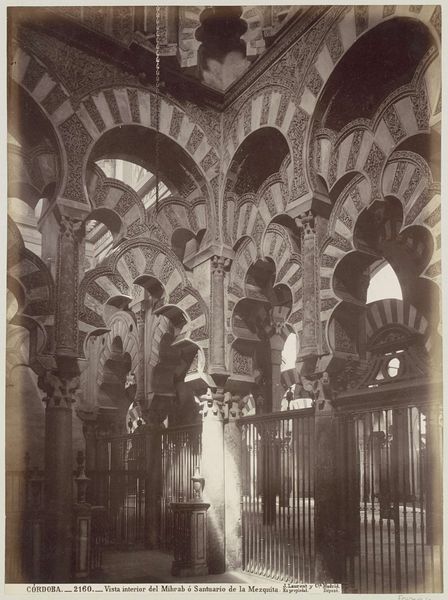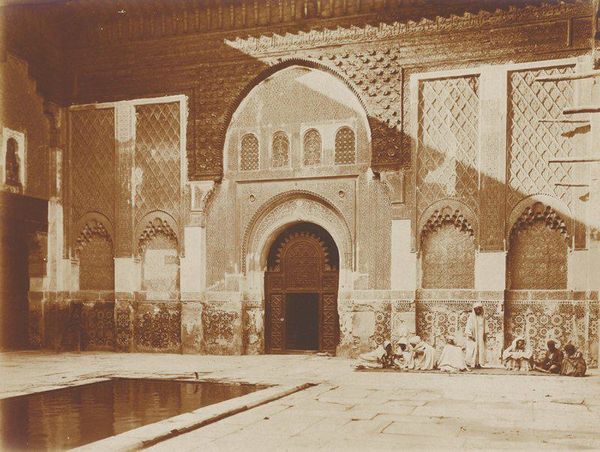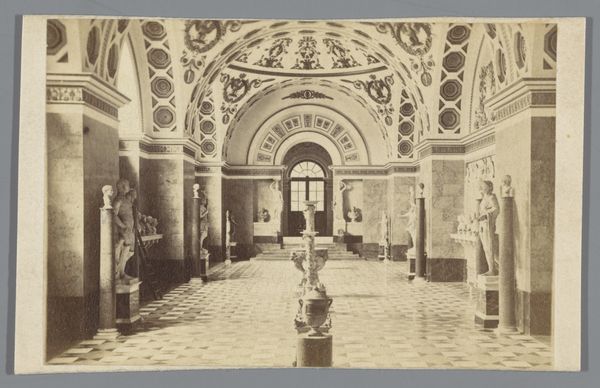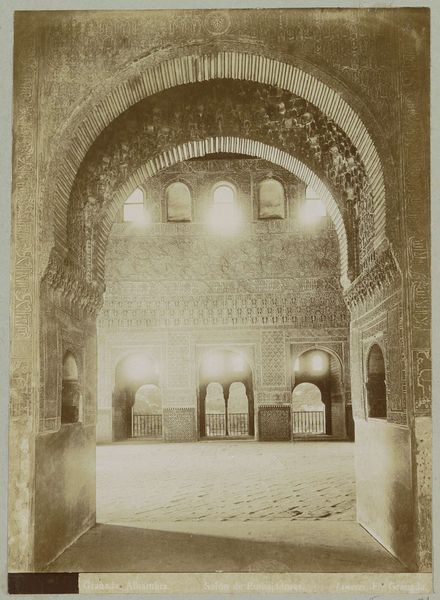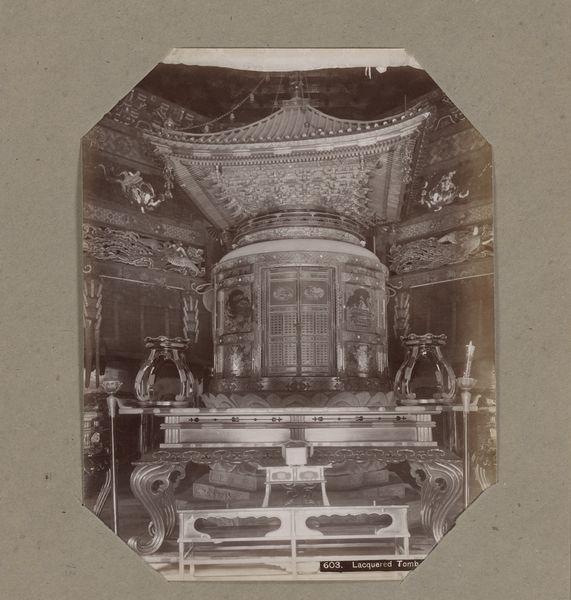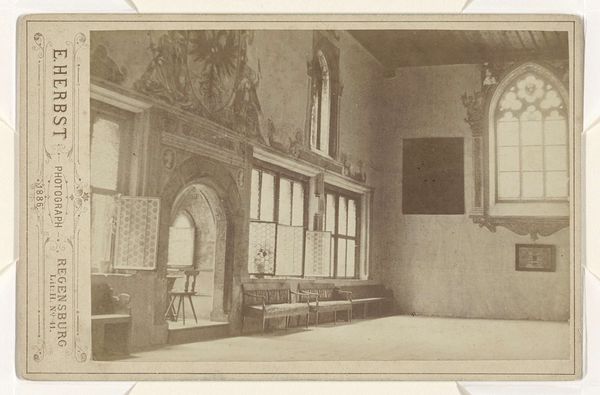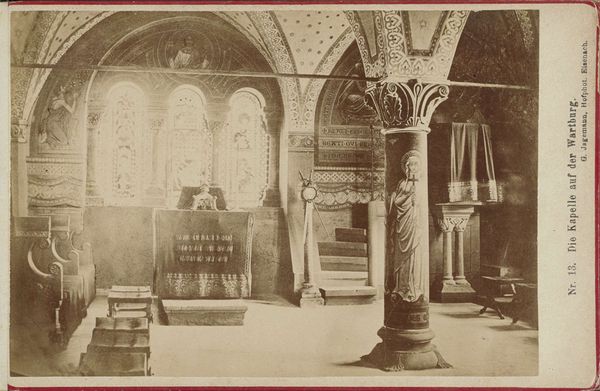
albumen-print, photography, albumen-print, architecture
#
albumen-print
#
historic architecture
#
photography
#
19th century
#
islamic-art
#
albumen-print
#
architecture
Dimensions: 8 7/8 x 11 3/8 in. (22.54 x 28.89 cm) (image)11 x 14 in. (27.94 x 35.56 cm) (mount)
Copyright: Public Domain
Editor: This albumen print, "Mosque d'Omar" by Félix Bonfils, dates back to the 1870s. I'm struck by the rich textures and the almost tactile quality of the stone surfaces. It feels very weighty, very permanent. What jumps out at you? Curator: Considering it as a materialist, I immediately look to the conditions of production: Bonfils, a Western photographer, traveling to Jerusalem in the 1870s. The very act of capturing this image—transporting the equipment, preparing the albumen prints, negotiating access—speaks volumes about colonial power dynamics and the commodification of cultural heritage. What materials would he have had to procure, and what were the labor conditions for such a task? Editor: That's fascinating, I hadn’t thought about the sheer logistics of creating this image. The albumen print process itself seems pretty complex, and labor-intensive. Curator: Precisely! Think about the process. Albumen, derived from egg whites, painstakingly coated on paper. Sunlight harnessed as the primary means of fixing the image. How does the material reality of its production, that labor, shape its meaning, and ultimately, its value as both a document and a work of art? The tones highlight the materials used for the Mosque. Editor: So, it’s not just about the artistic eye, but also the economic and social forces at play in producing this specific kind of image? Curator: Absolutely. And what does the popularity of such images reveal about European consumption of the "Orient" at the time? It satisfies a demand, creating a visual shorthand for a complex place. Think also about access, who gets to see it in the West compared to locally? Editor: I'm beginning to see how focusing on the materials and their production opens up entirely new layers of interpretation. I appreciate how you draw attention to the labor, materiality, and consumption intertwined within this photograph. Curator: Glad to have offered an alternative perspective. The materiality always offers critical insights into history.
Comments
No comments
Be the first to comment and join the conversation on the ultimate creative platform.


